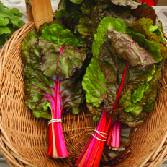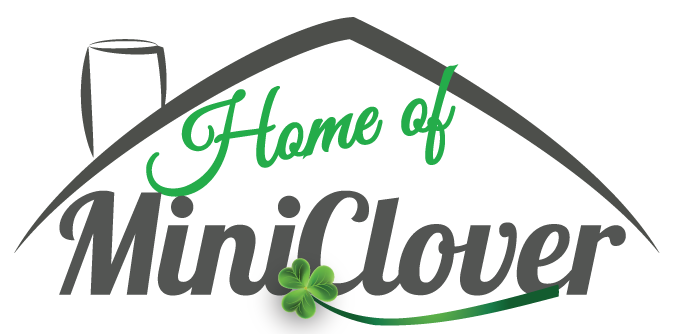-
CATEGORY ::
- All Seeds /
- All Flower Seeds /
- All Agastache Seeds
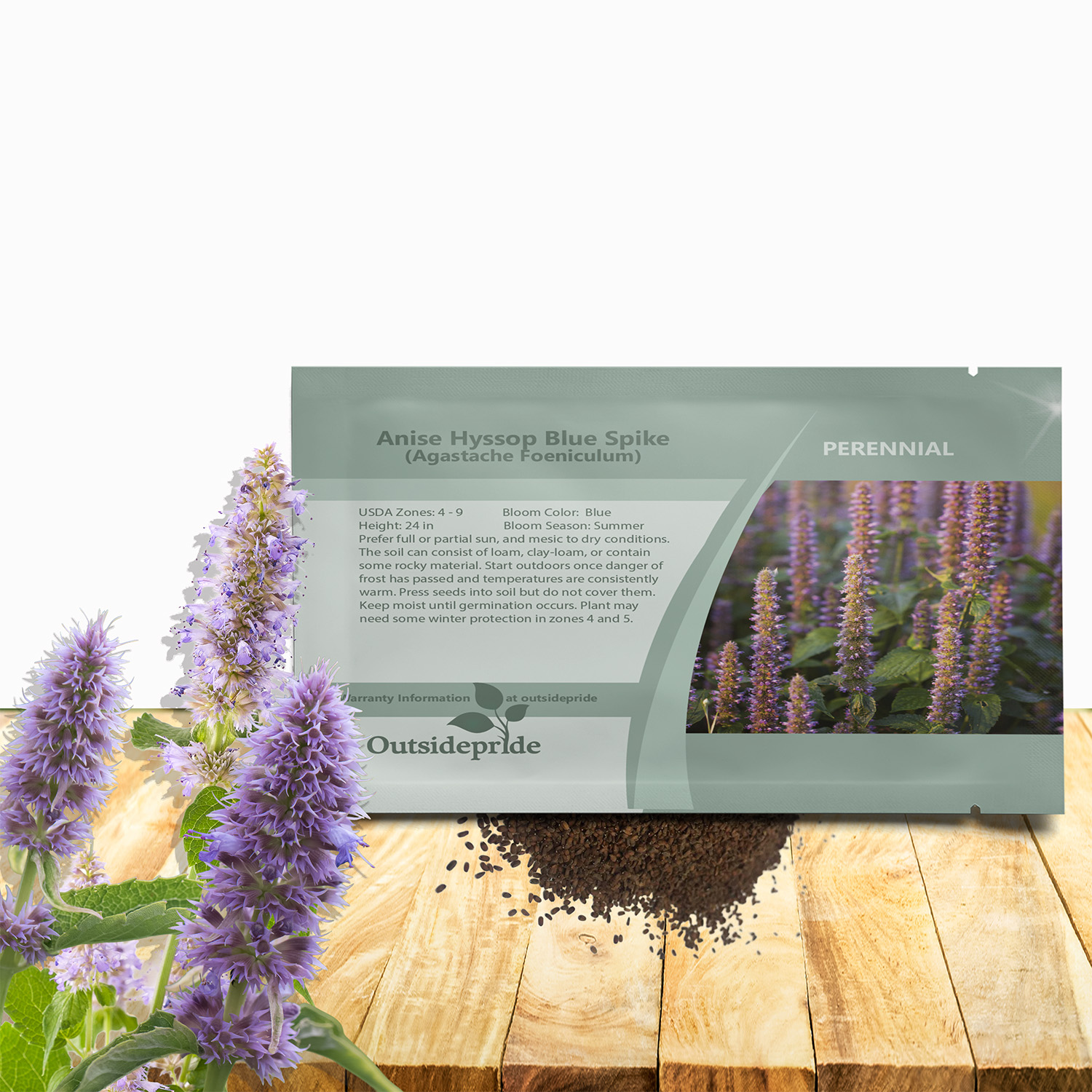

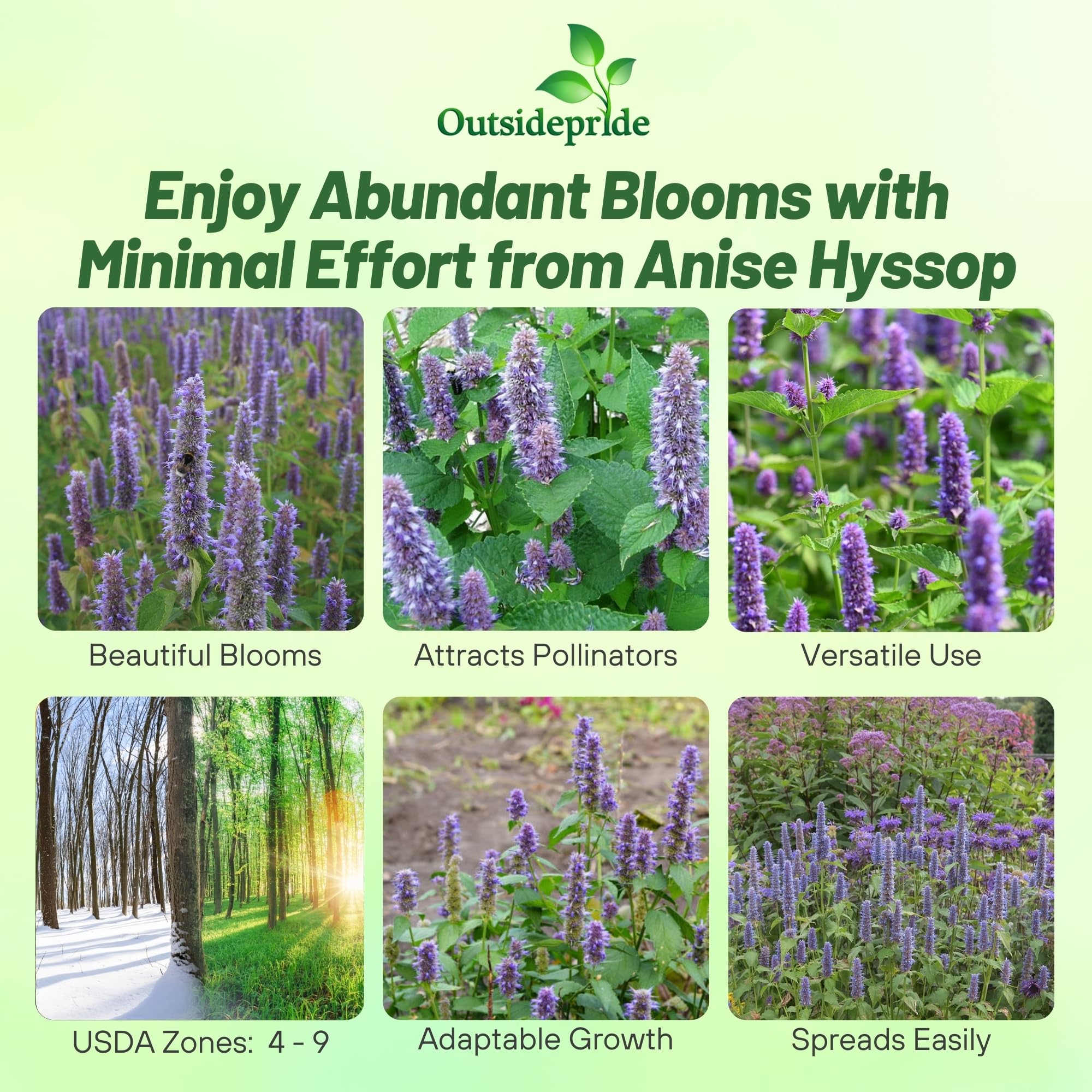
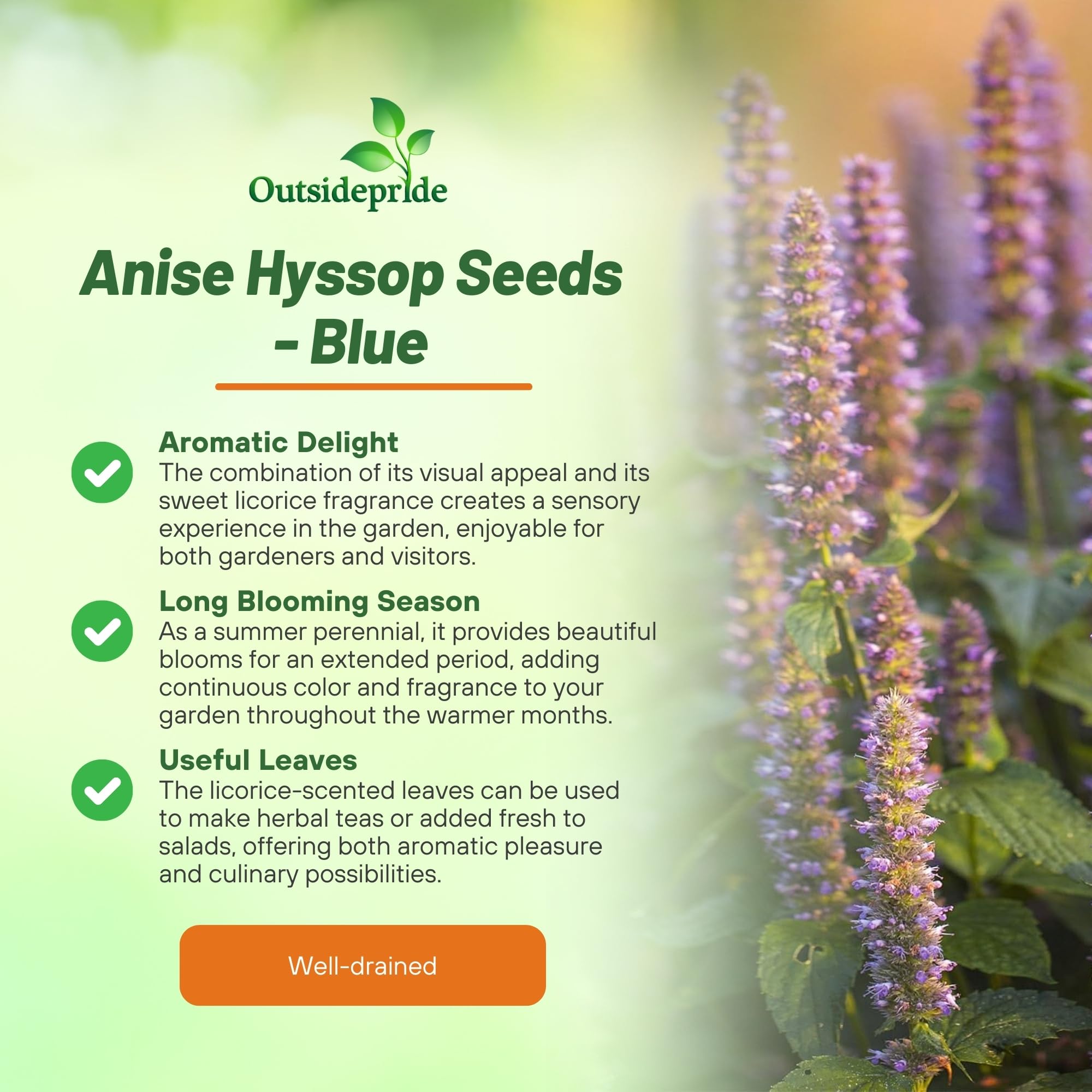
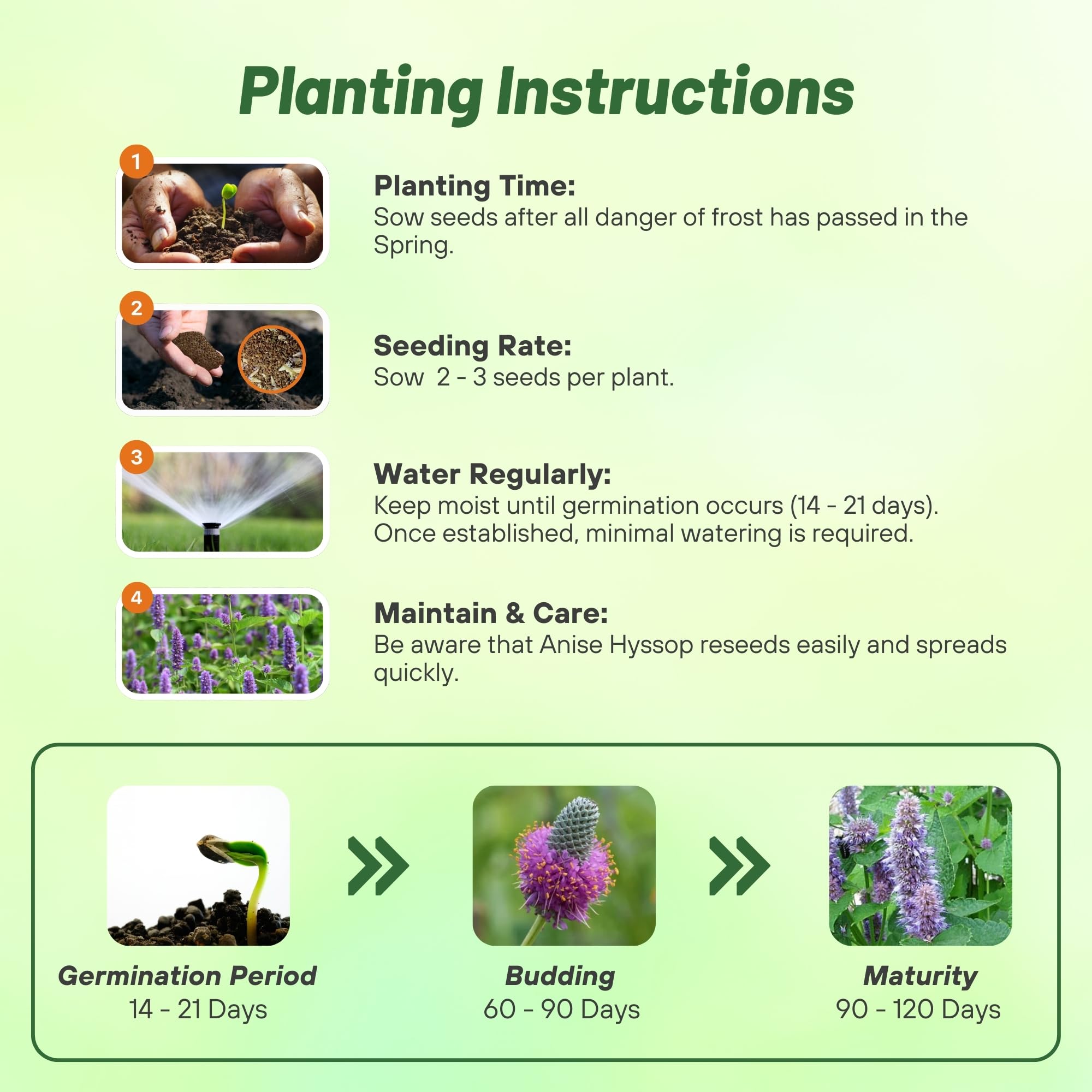



Anise Hyssop Seeds - Blue
About...
Anise Hyssop Blue Spike (Agastache Foeniculum) - Start Anise Hyssop seeds and grow this lovely perennial drought tolerant herb! Anise Hyssop only grows to approximately 24 inches tall and has bright blue flower spikes. The spikes are tightly packed with flowers that bloom at different times.MORE AGASTACHE OPTIONS
Planting Directions
TEMPERATURE
68F
AVERAGE GERM TIME
14 - 21 days
LIGHT REQUIRED
Yes
DEPTH
Do not cover the seed but tightly press into the soil
SOWING RATE
2 - 3 seeds per plant
MOISTURE
Keep seeds moist until germination
PLANT SPACING
18 inches
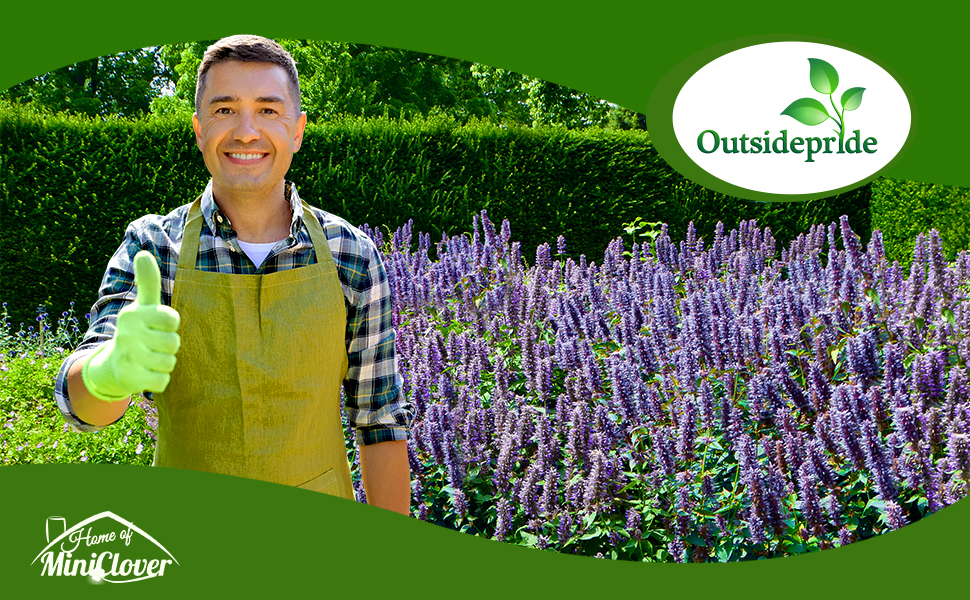
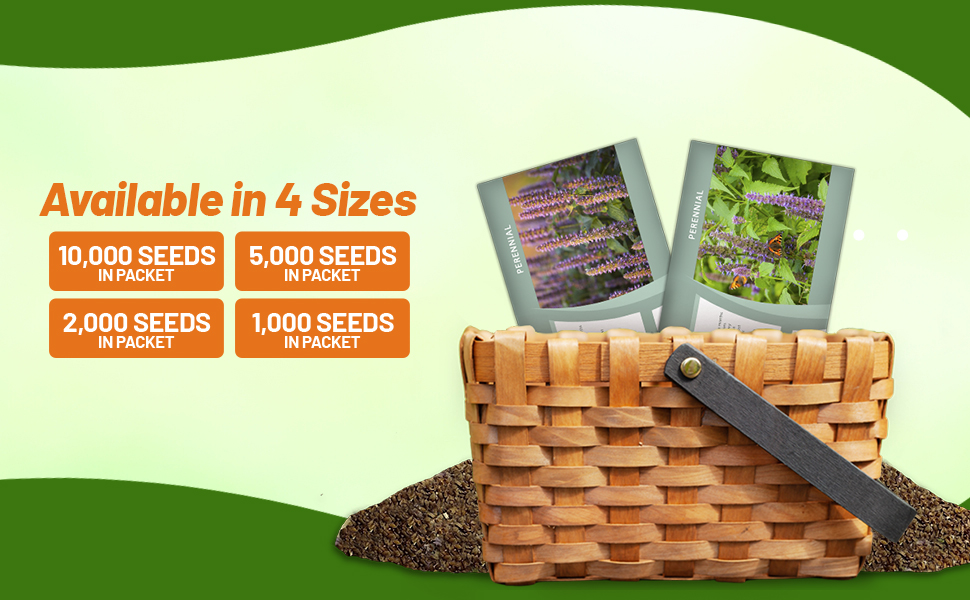
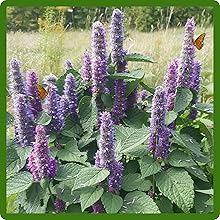
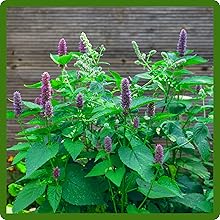
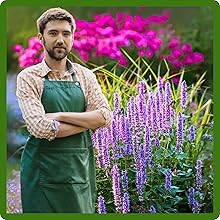
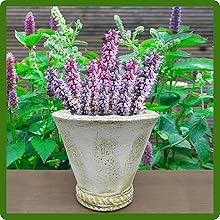
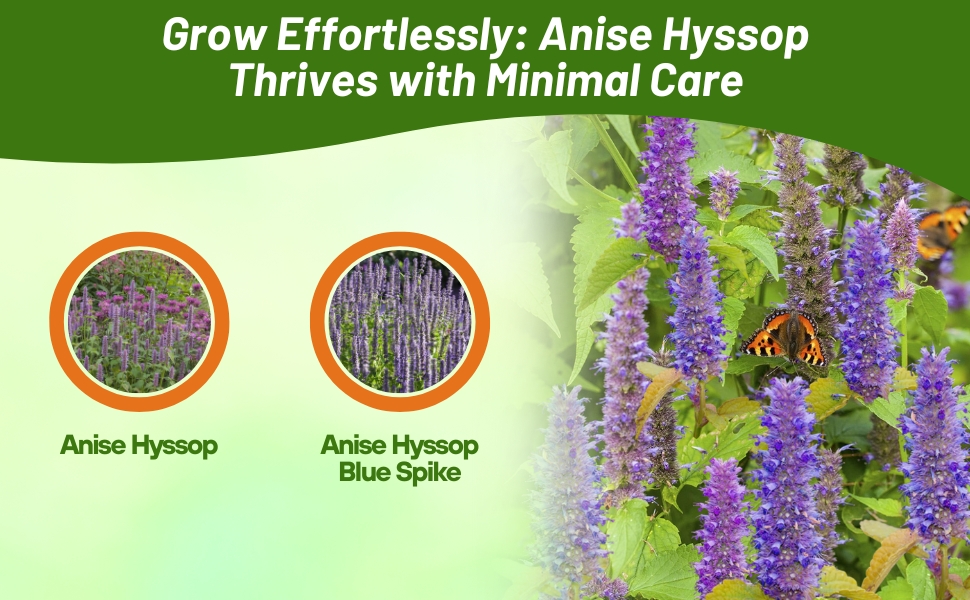
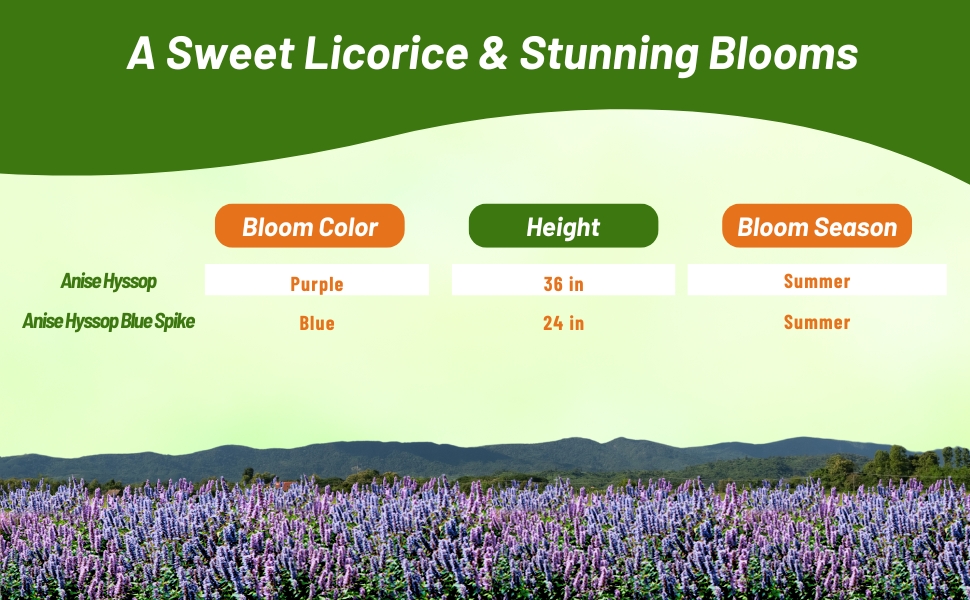
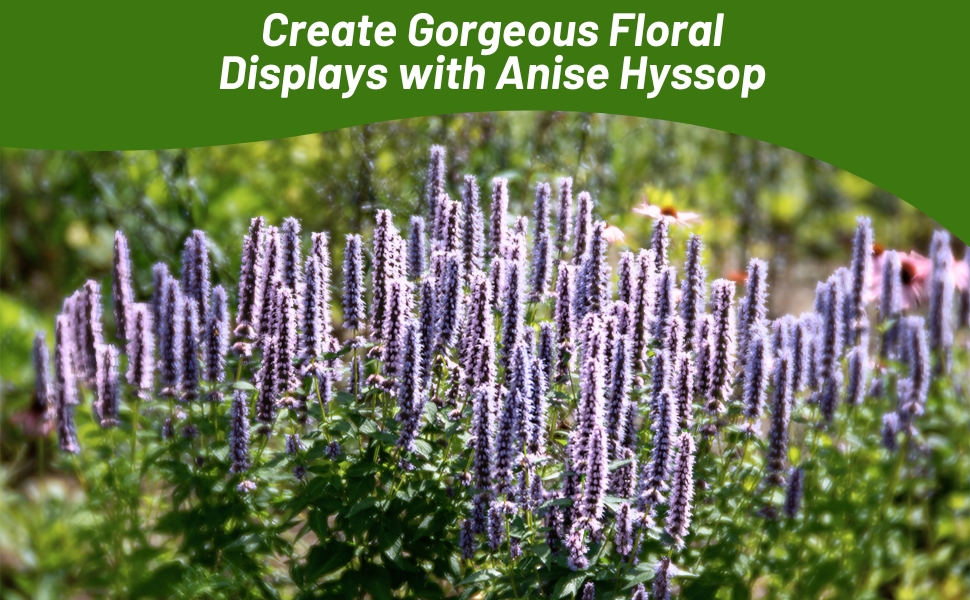
Anise Hyssop Blue Spike (Agastache Foeniculum) - Start Anise Hyssop seeds and grow this lovely perennial, drought tolerant herb! Anise Hyssop only grows to approximately 24 inches tall and has bright blue flower spikes. The spikes are tightly packed with flowers that bloom at different times.
Common Questions
Do I need to deadhead my anise hyssop?
If you want to prolong your bloom season you will need to deadhead your flowers.
Does anise hyssop work for butterfly gardens?
Yes, anise hyssop attracts butterflies so is great for a butterfly garden.
Can I use anise hyssop for cut flowers?
Yes, anise hyssop can be used for a cut flower.
Can anise hyssop by dried for dried flower arrangements.
Yes, hang the blooming spikes upside down or let them dry naturally on the plant.
Planting Directions
TEMPERATURE
68F
AVERAGE GERM TIME
14 - 21 days
LIGHT REQUIRED
Yes
DEPTH
Seeds must be covered thinly
SOWING RATE
3 seeds per plant
MOISTURE
Keep seeds moist until germination
PLANT SPACING
18 - 24 inches
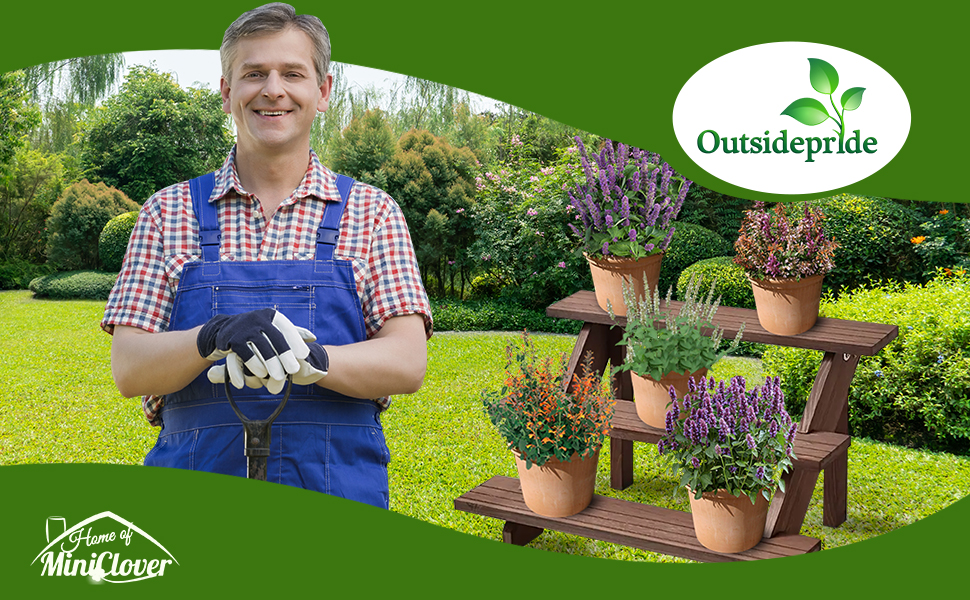
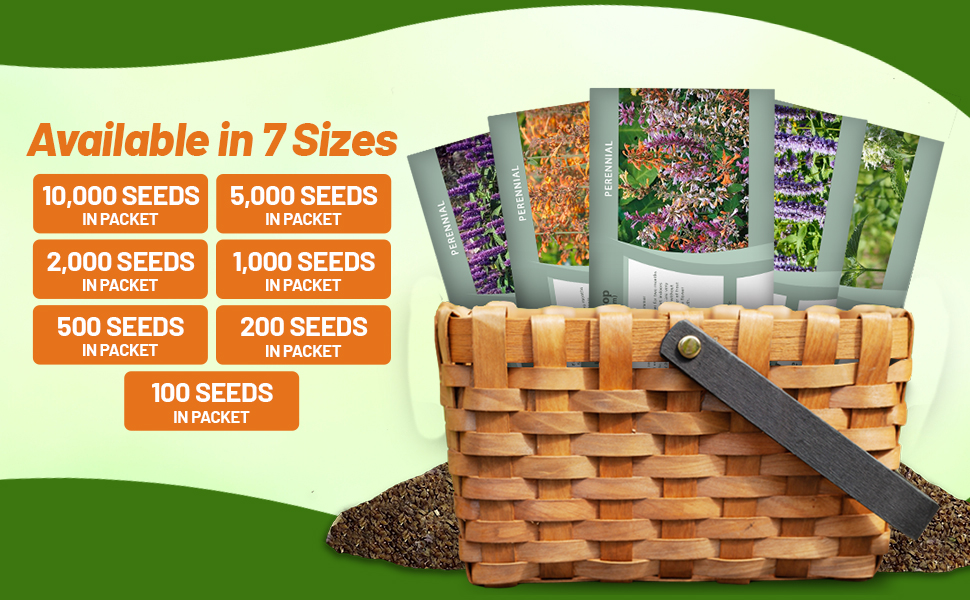
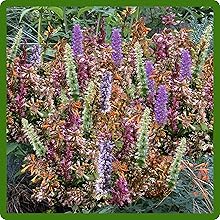
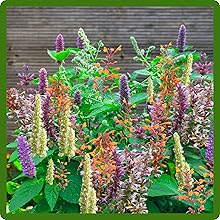
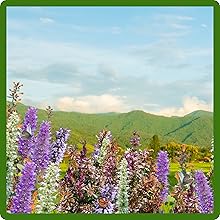
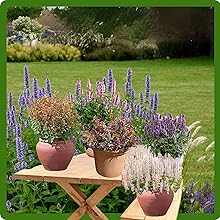
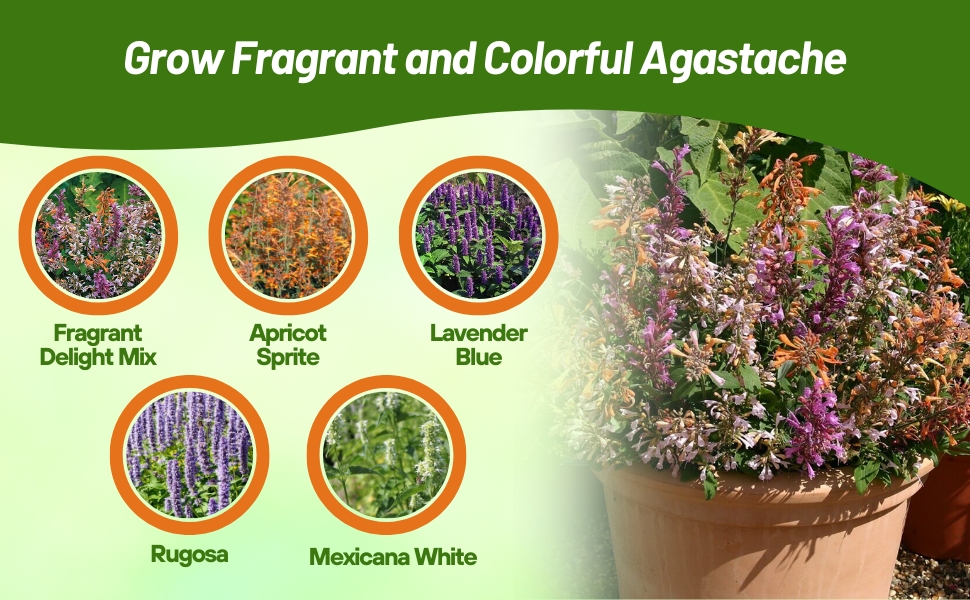
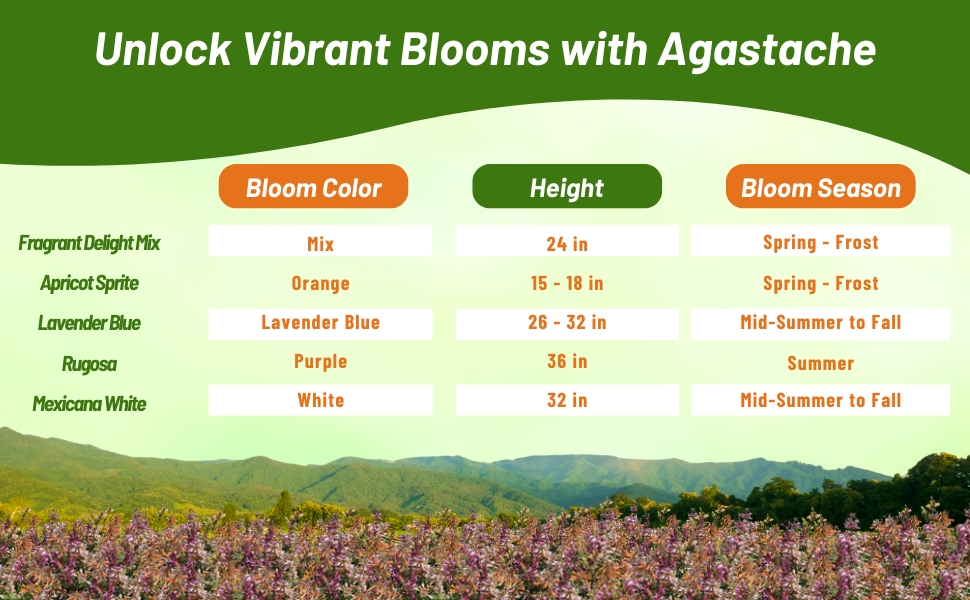
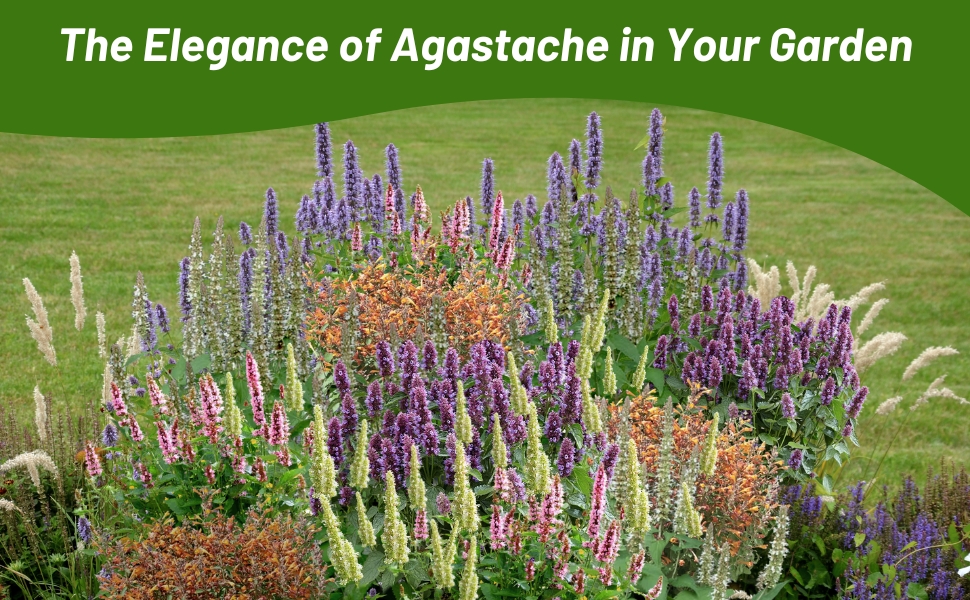
Giant Hyssop (Agastache Mexicana Lavender Blue) - This herbaceous perennial is best grown in moderately fertile, well-drained soil which is kept on the dry side. Because Giant Hyssop is highly scented, it is an excellent attractant to hummingbirds and butterflies. Agastache Hyssop flower seeds can be sown indoors 6 - 8 weeks before the last frost, and it will establish quickly in the garden after being transplanted when frost danger has passed.
One of the easiest and most rewarding perennials to grow from flower seeds! The award winning Agastache Mexicana is a tremendously long bloomer that produces lavender blue, bottle brush-like flowers on strong, upright stems from early summer to early fall. It is useful for adding a spot of color to the garden late in the season when many other plants are finished. The Hyssop plant has foliage that smells distinctly like black licorice when crushed. This species is also popular as a cut flower, and it dries well for use in dried arrangements.
Common Questions
How can I encourage my Agastache to continue to bloom?
Trim the tips of the growth in spring when the plants reach around 6 inches tall to promote branching. Regularly remove spent flowers during the growing season to ensure continuous blooming.
Do I need to deadhead my Agastache?
Deadheading agastache flowers promotes more blooms and helps manage the plant's tendency to self-seed. While not essential, removing spent flowers maintains plant neatness and prevents excessive self-seeding by agastache.
For further pruning, consider whether you are cultivating agastache as a perennial or annual plant. For perennials, trim back about one-third of the plant in spring to stimulate fresh growth. Continue pinching and deadheading until midsummer, as new growth is sensitive to cold and could jeopardize the plant's survival in winter. If growing agastache as an annual, ongoing pinching and deadheading throughout the season is suitable.
Are agastache invasive?
If you have planted hummingbird mint, or any other type of agastache, in your garden, you may notice that it spreads similar to mint. This plant tends to self-seed abundantly, but removing the seedlings is a simple task. Additionally, you can prevent seeds from dropping by removing the spent flowerheads. Despite its tendency to spread, agastache is not classified as invasive, especially if you choose a variety native to your region.
Is it easy to grow agastache from seed?
Agastache can be grown from seed quite easily, but the seeds need cold stratification and light for germination. For this reason, it is recommended to start agastache seeds in the fall or winter with minimal covering.
Planting Directions
TEMPERATURE
68F
AVERAGE GERM TIME
14 - 21 days
LIGHT REQUIRED
Yes
DEPTH
Do not cover the seed but tightly press into the soil
SOWING RATE
2 - 3 seeds per plant
MOISTURE
Keep seeds moist until germination
PLANT SPACING
18 inches
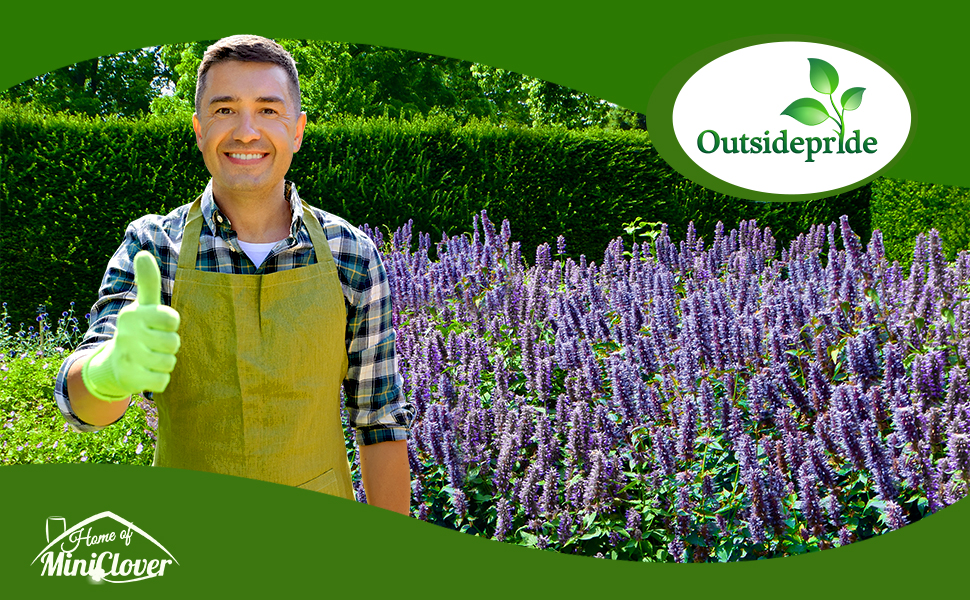
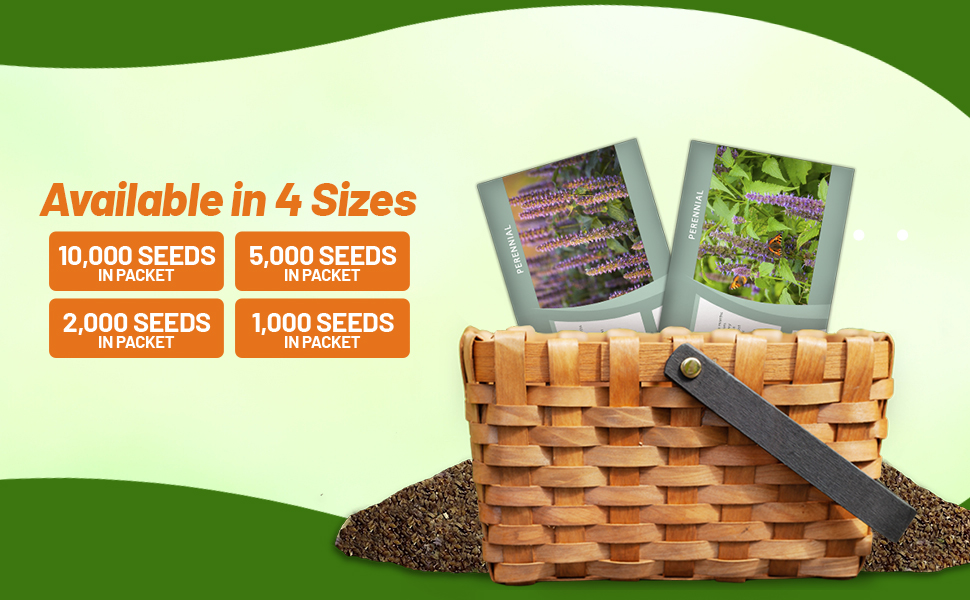
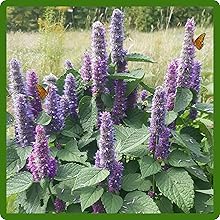
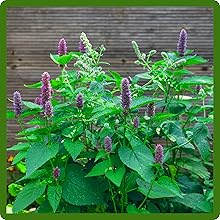
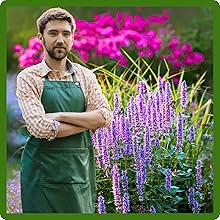
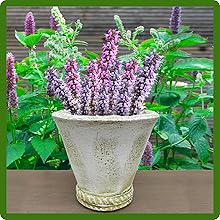
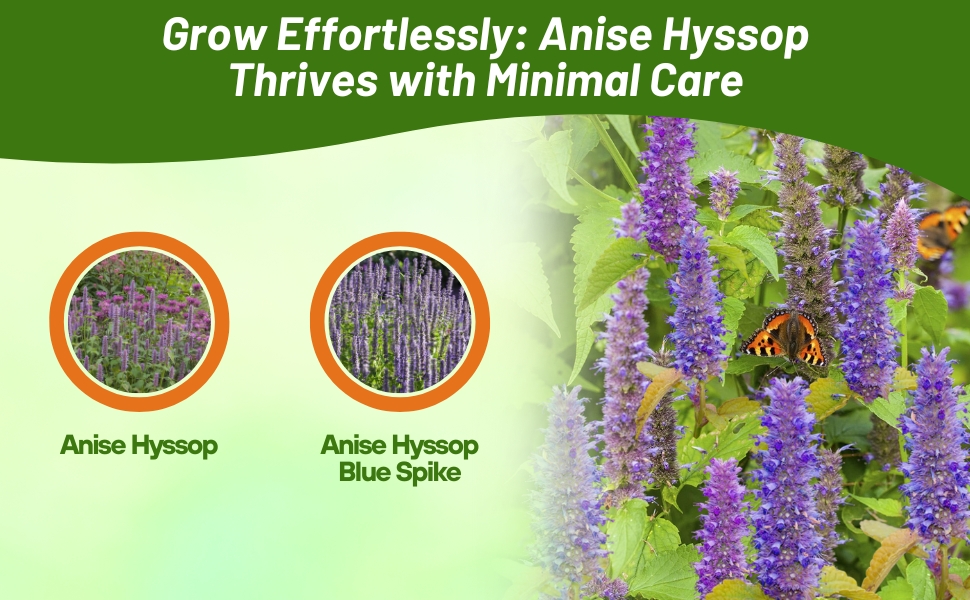
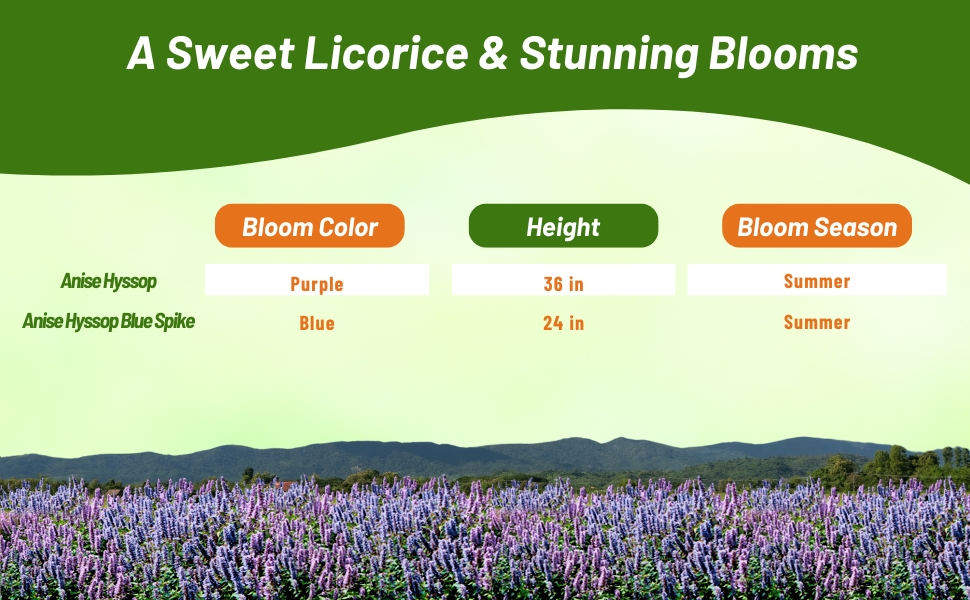
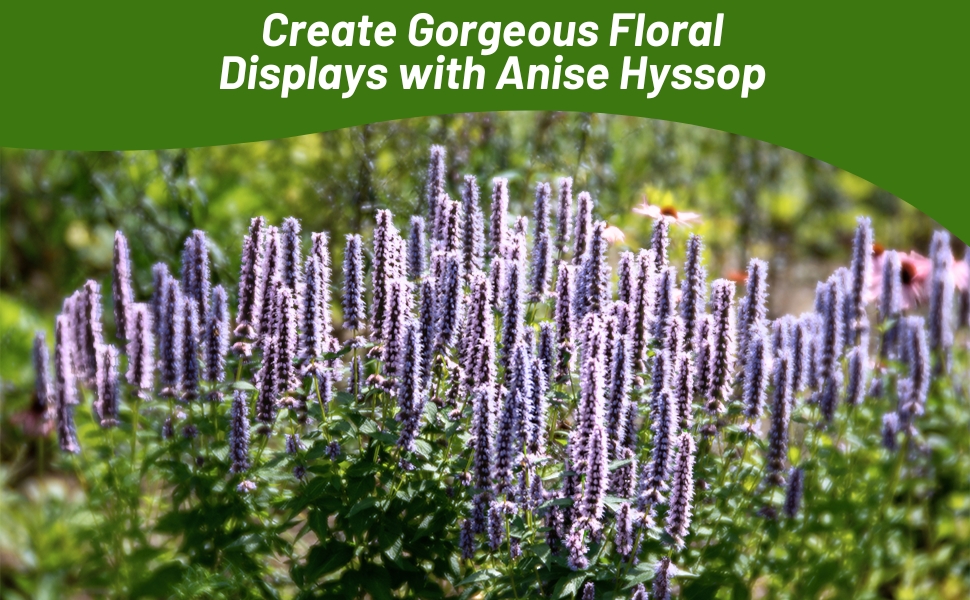
Anise Hyssop (Agastache Foeniculum) - Anise Hyssop seeds are so rewarding to grow! This Anise Hyssop is a beautiful, drought tolerant, fragrant flower which makes a wonderful addition to xeriscape herb gardens, perennial flower borders, and wildflower areas.
Common Questions
Do I need to deadhead my anise hyssop?
If you want to prolong your bloom season you will need to deadhead your flowers.
Does anise hyssop work for butterfly gardens?
Yes, anise hyssop attracts butterflies so is great for a butterfly garden.
Can I use anise hyssop for cut flowers?
Yes, anise hyssop can be used for a cut flower.
Can anise hyssop by dried for dried flower arrangements.
Yes, hang the blooming spikes upside down or let them dry naturally on the plant.
Planting Directions
TEMPERATURE
68F
AVERAGE GERM TIME
14 - 21 days
LIGHT REQUIRED
No
DEPTH
Seeds must be covered thinly
SOWING RATE
3 seeds per plant
MOISTURE
Keep seeds moist until germination
PLANT SPACING
18 - 24 inches
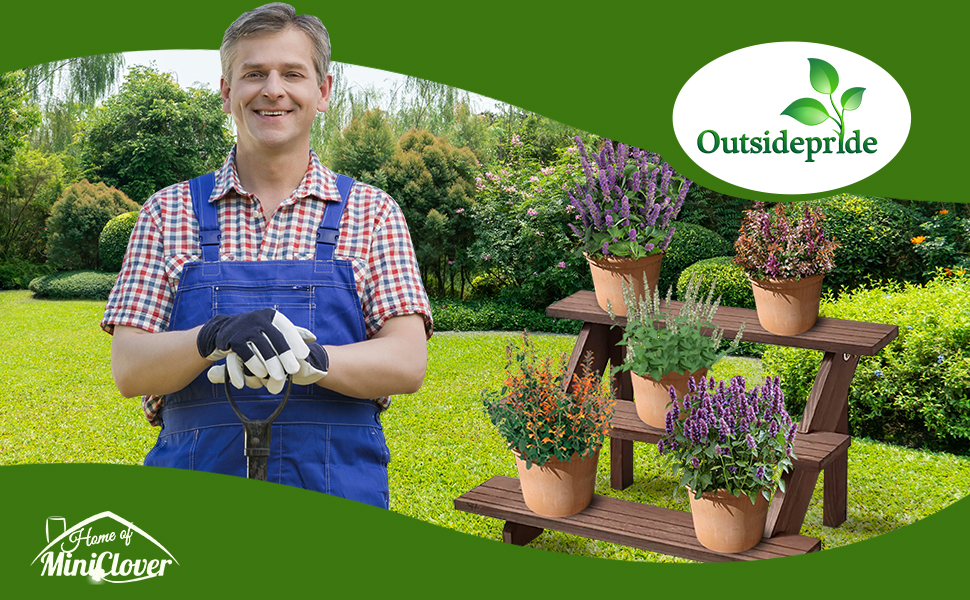
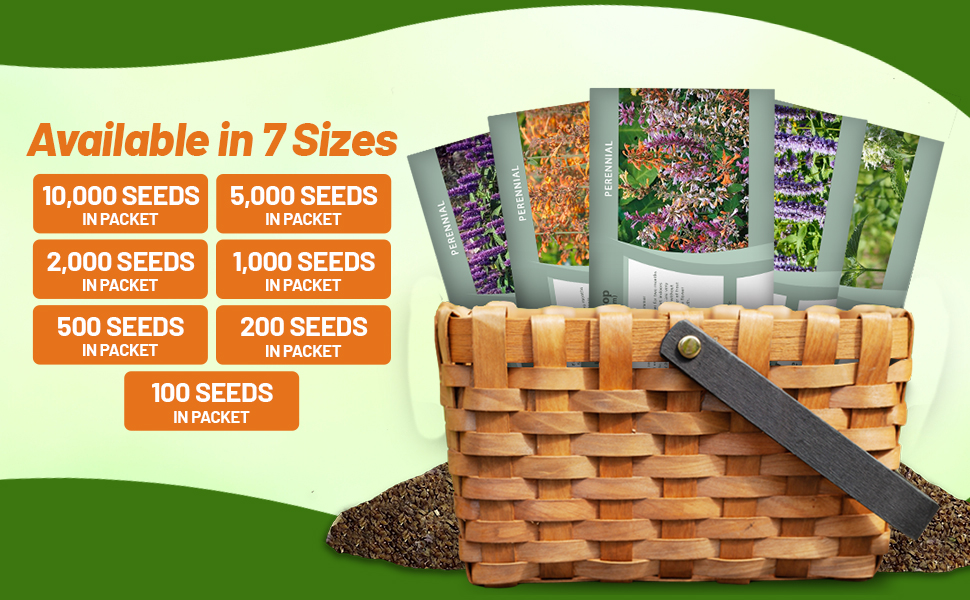
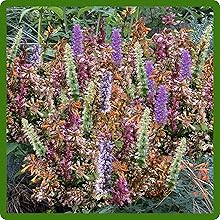
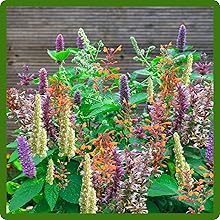
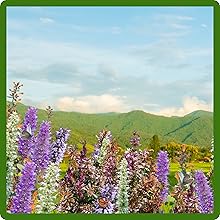
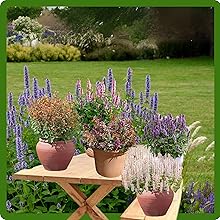
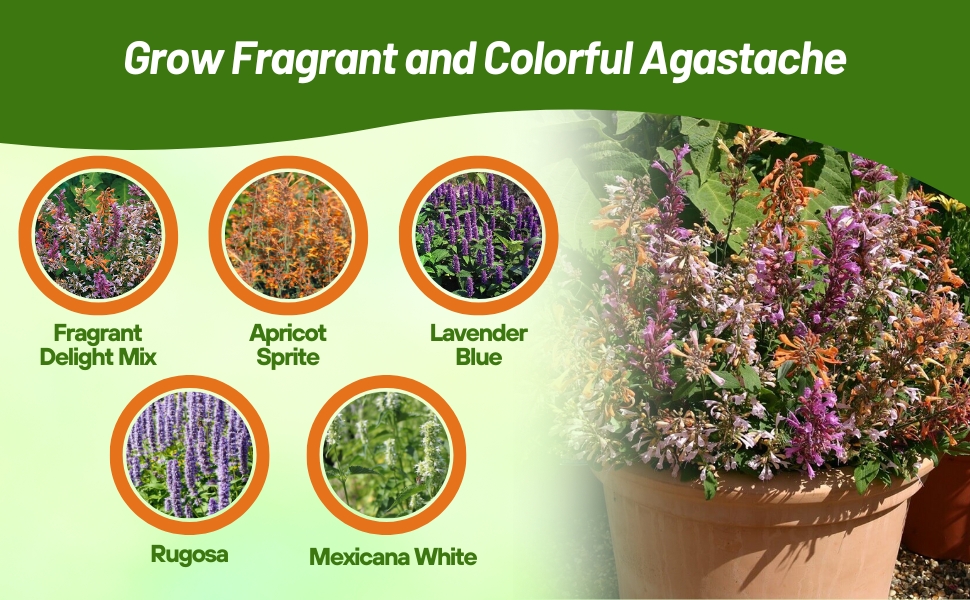
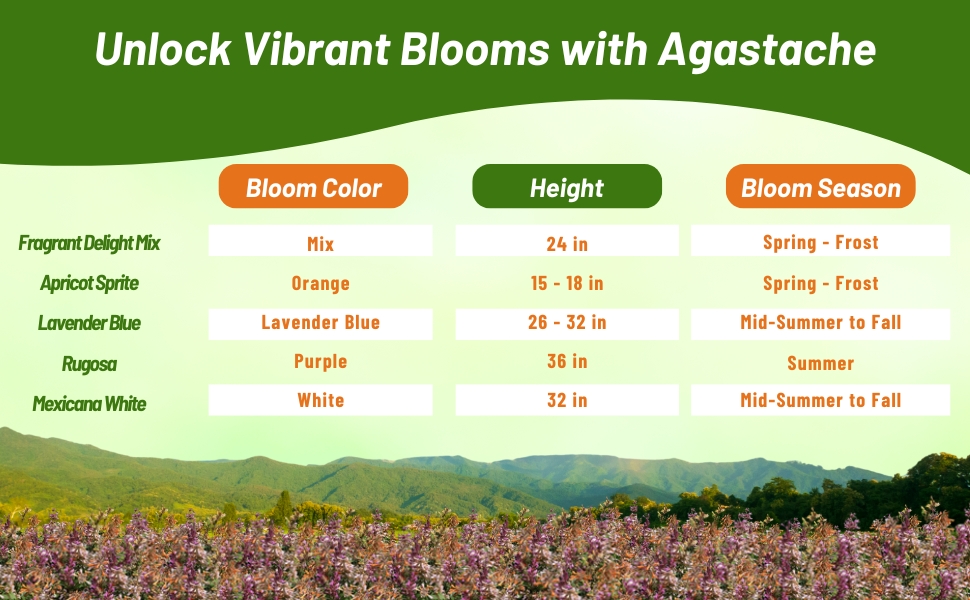
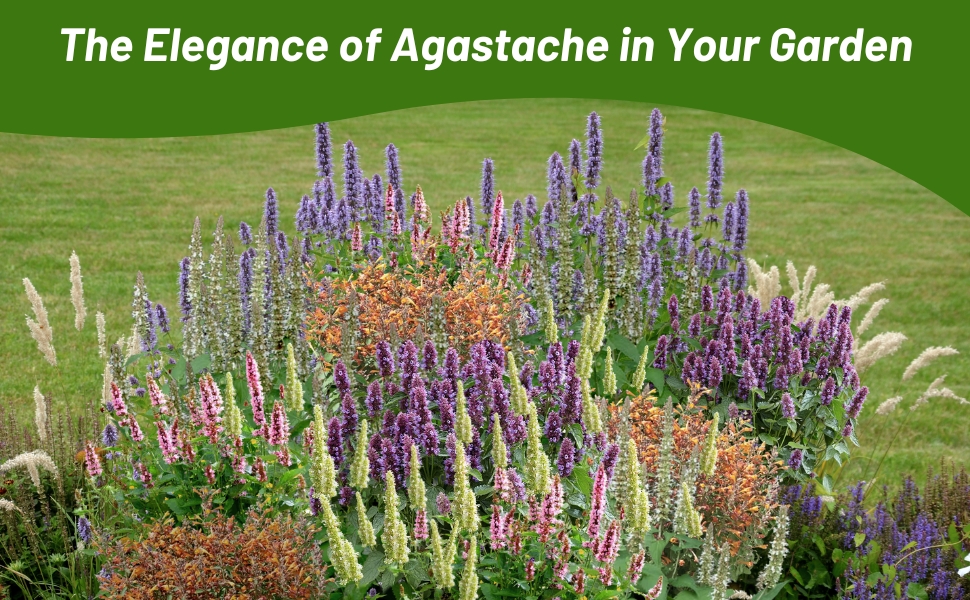
Giant Hyssop (Agastache Mexicana White) - This Giant Hyssop is characterized by upright growth, bushy, lemon-scented foliage and spikes of tubular white flowers that reach 26 - 32 inches in height. It is considered to be a short-lived perennial, and it easily establishes from Agastache Hyssop flower seeds. The Giant Hyssop plant is a magnet for bees and hummingbirds, and, like most species of Agastache, it has very pleasant smelling foliage. Many people make tea out of the leaves. It grows about 12 inches wide. Grow in moderately fertile, well-draining soils and in full sun.
Start the Agastache flower seeds indoors 6 - 8 weeks before the last expected frost. Cover the flower seeds lightly and keep them moist until germination. Transplant after danger of frost and the Hyssop plant will establish quickly in the garden.
Common Questions
How can I encourage my Agastache to continue to bloom?
Trim the tips of the growth in spring when the plants reach around 6 inches tall to promote branching. Regularly remove spent flowers during the growing season to ensure continuous blooming.
Do I need to deadhead my Agastache?
Deadheading agastache flowers promotes more blooms and helps manage the plant's tendency to self-seed. While not essential, removing spent flowers maintains plant neatness and prevents excessive self-seeding by agastache.
For further pruning, consider whether you are cultivating agastache as a perennial or annual plant. For perennials, trim back about one-third of the plant in spring to stimulate fresh growth. Continue pinching and deadheading until midsummer, as new growth is sensitive to cold and could jeopardize the plant's survival in winter. If growing agastache as an annual, ongoing pinching and deadheading throughout the season is suitable.
Are agastache invasive?
If you have planted hummingbird mint, or any other type of agastache, in your garden, you may notice that it spreads similar to mint. This plant tends to self-seed abundantly, but removing the seedlings is a simple task. Additionally, you can prevent seeds from dropping by removing the spent flowerheads. Despite its tendency to spread, agastache is not classified as invasive, especially if you choose a variety native to your region.
Is it easy to grow agastache from seed?
Agastache can be grown from seed quite easily, but the seeds need cold stratification and light for germination. For this reason, it is recommended to start agastache seeds in the fall or winter with minimal covering.
Planting Directions
TEMPERATURE
68F
AVERAGE GERM TIME
14 - 21 days
LIGHT REQUIRED
Yes
DEPTH
Do not cover the seed but tightly press into the soil
SOWING RATE
2 - 3 seeds per plant
MOISTURE
Keep seeds moist until germination
PLANT SPACING
18 inches
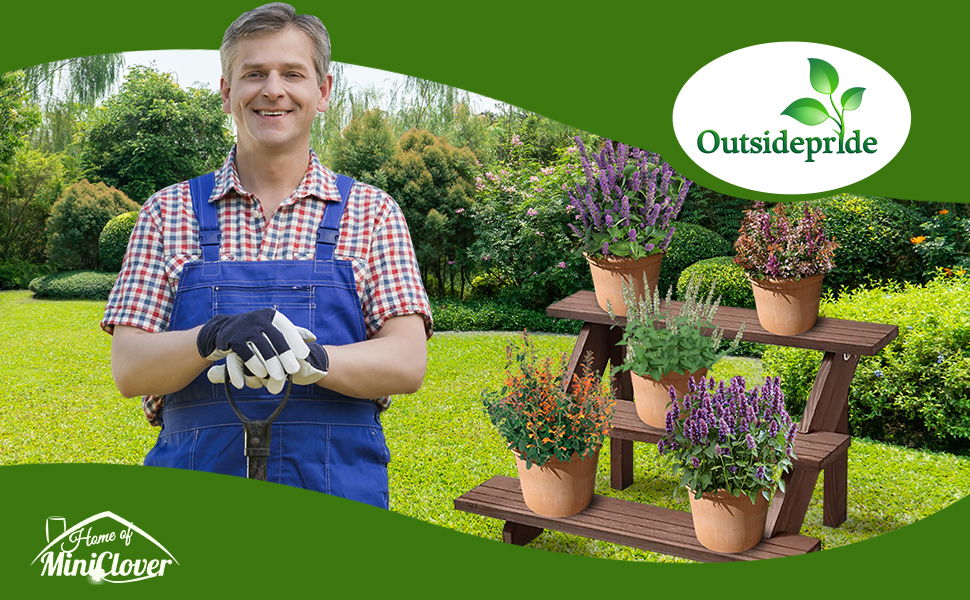
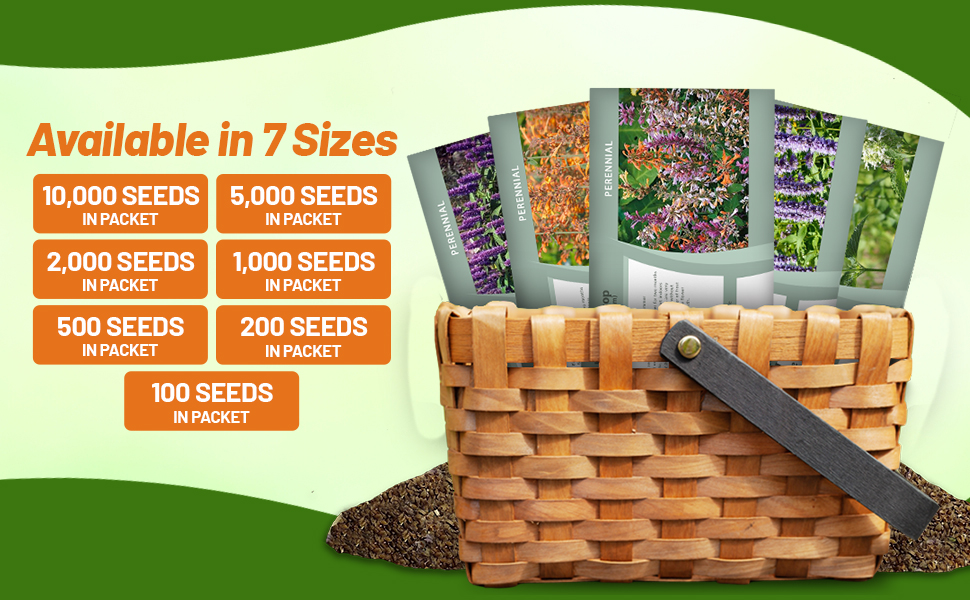
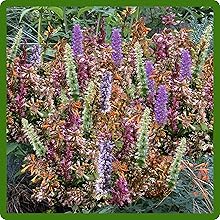
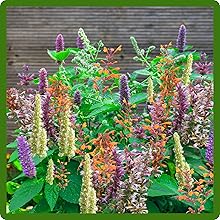
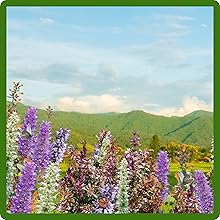
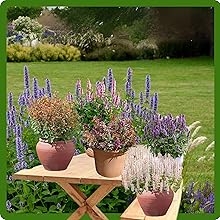
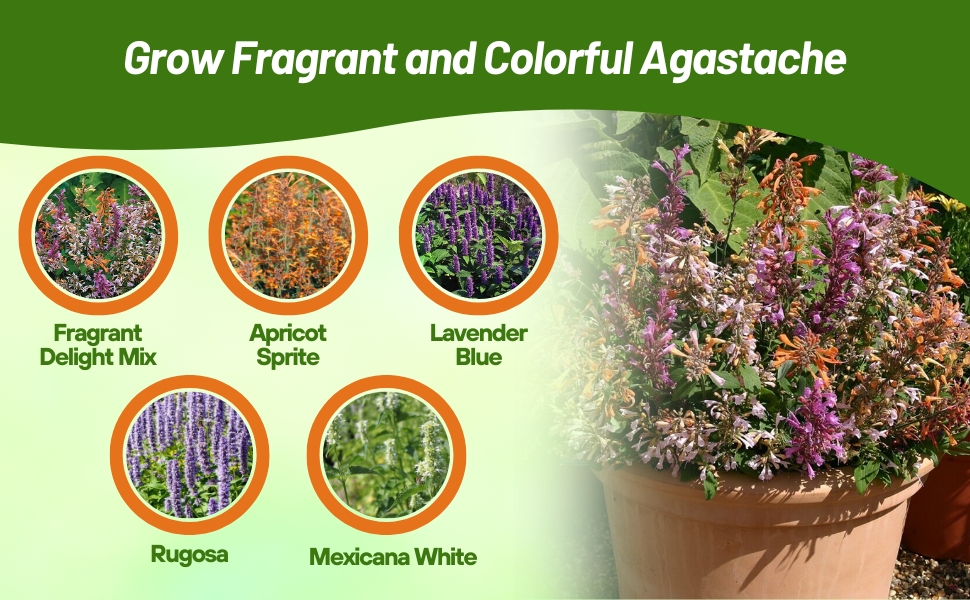
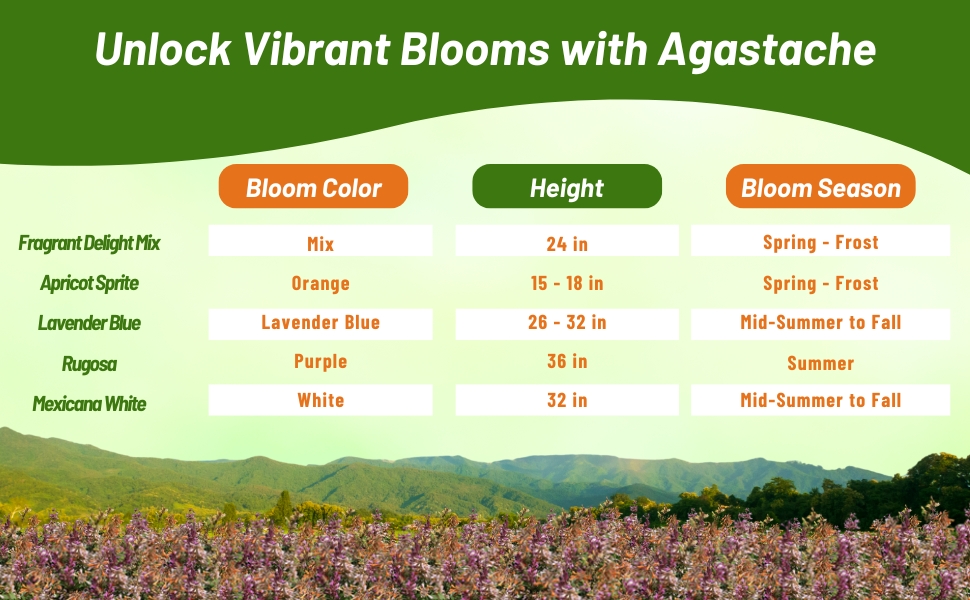
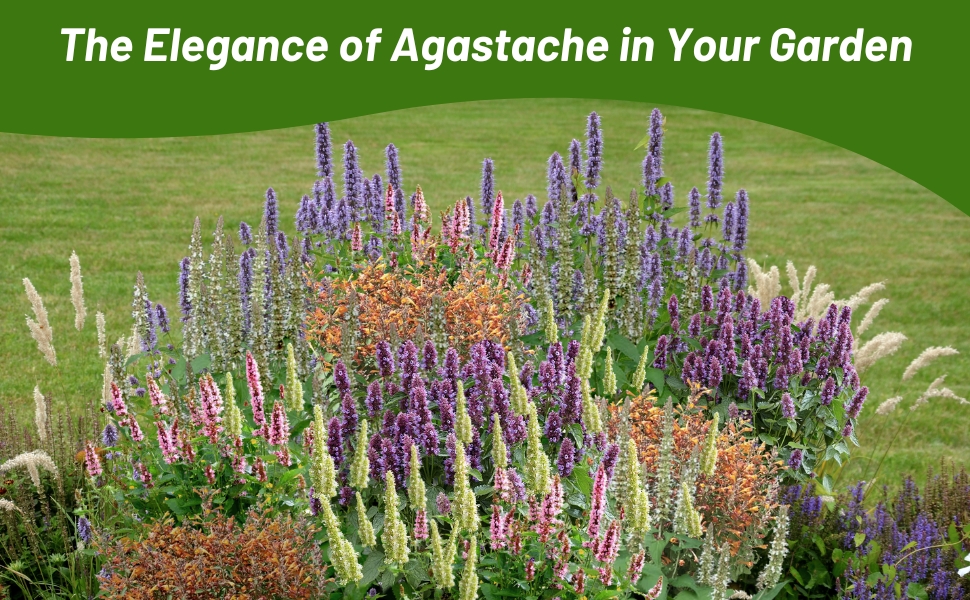
Korean Mint(Agastache Rugosa) - Bring the bees and butterflies to your garden when you start Korean mint seeds and grow this wonderfully fragrant perennial Agastache herb plant. Agastache Rugosa has tall flower spikes that are full of mauve flowers that bloom at different times.
Common Questions
How can I encourage my Agastache to continue to bloom?
Trim the tips of the growth in spring when the plants reach around 6 inches tall to promote branching. Regularly remove spent flowers during the growing season to ensure continuous blooming.
Do I need to deadhead my Agastache?
Deadheading agastache flowers promotes more blooms and helps manage the plant's tendency to self-seed. While not essential, removing spent flowers maintains plant neatness and prevents excessive self-seeding by agastache.
For further pruning, consider whether you are cultivating agastache as a perennial or annual plant. For perennials, trim back about one-third of the plant in spring to stimulate fresh growth. Continue pinching and deadheading until midsummer, as new growth is sensitive to cold and could jeopardize the plant's survival in winter. If growing agastache as an annual, ongoing pinching and deadheading throughout the season is suitable.
Are agastache invasive?
If you have planted hummingbird mint, or any other type of agastache, in your garden, you may notice that it spreads similar to mint. This plant tends to self-seed abundantly, but removing the seedlings is a simple task. Additionally, you can prevent seeds from dropping by removing the spent flowerheads. Despite its tendency to spread, agastache is not classified as invasive, especially if you choose a variety native to your region.
Is it easy to grow agastache from seed?
Agastache can be grown from seed quite easily, but the seeds need cold stratification and light for germination. For this reason, it is recommended to start agastache seeds in the fall or winter with minimal covering.
Planting Directions
TEMPERATURE
68F
AVERAGE GERM TIME
14 - 21 days
LIGHT REQUIRED
Yes
DEPTH
Do not cover the seed but tightly press into the soil
SOWING RATE
2 - 3 seeds per plant
MOISTURE
Keep seeds moist until germination
PLANT SPACING
12 inches
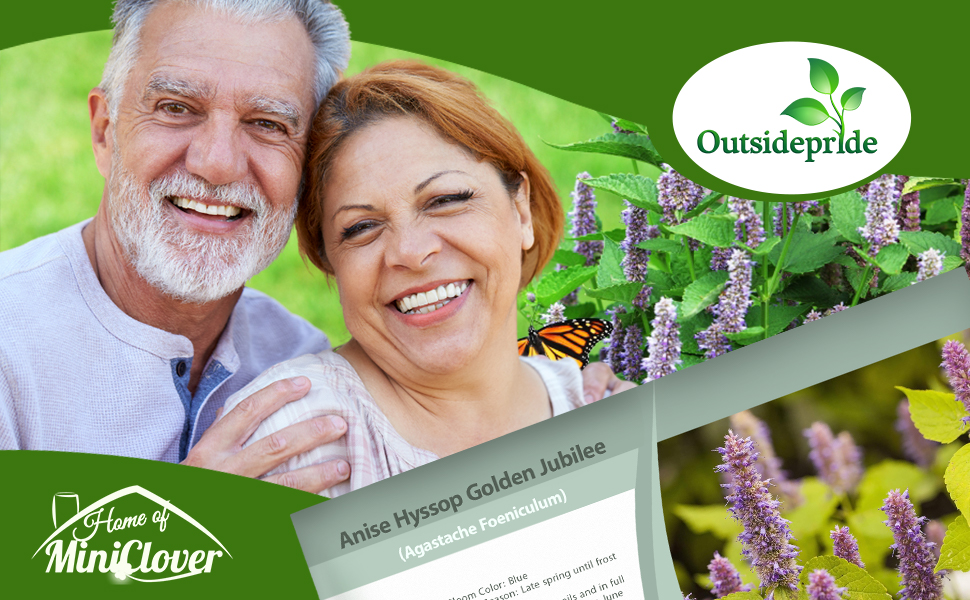
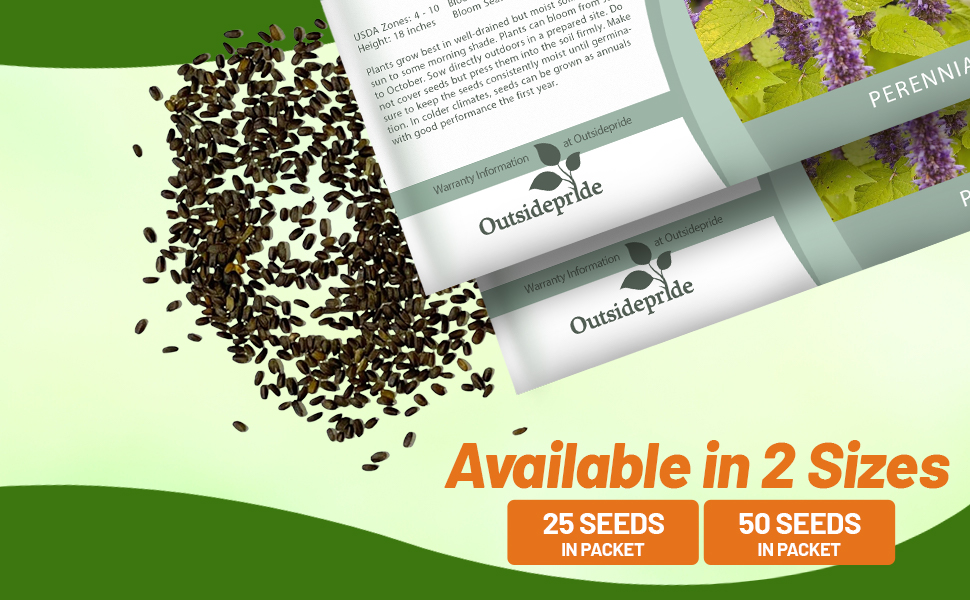
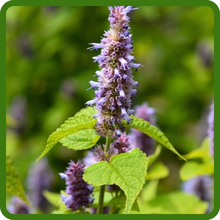
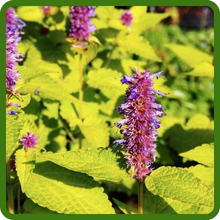
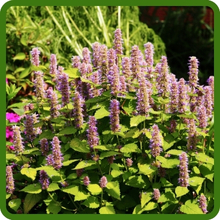
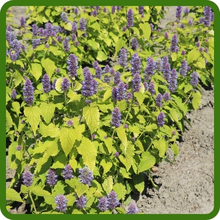
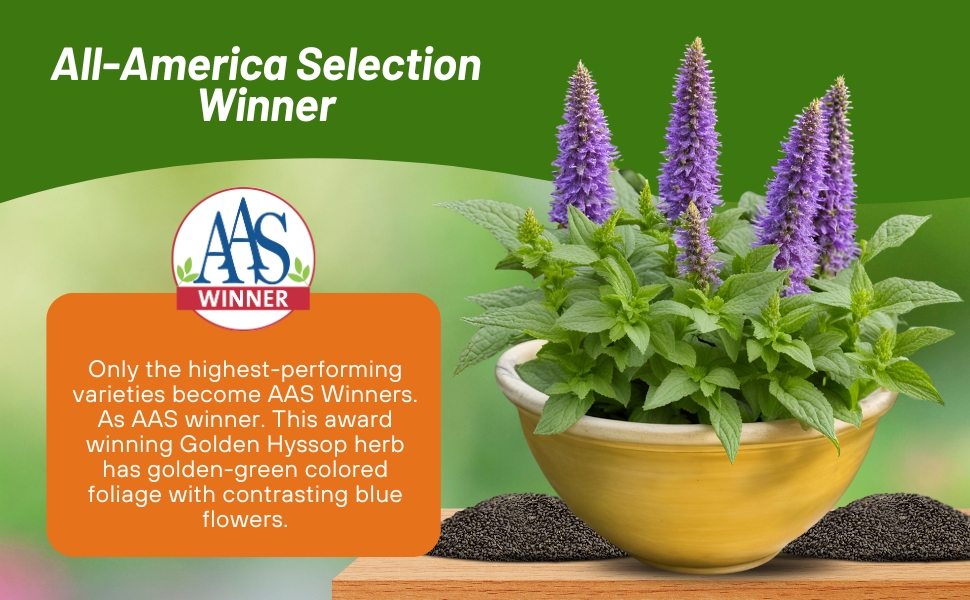
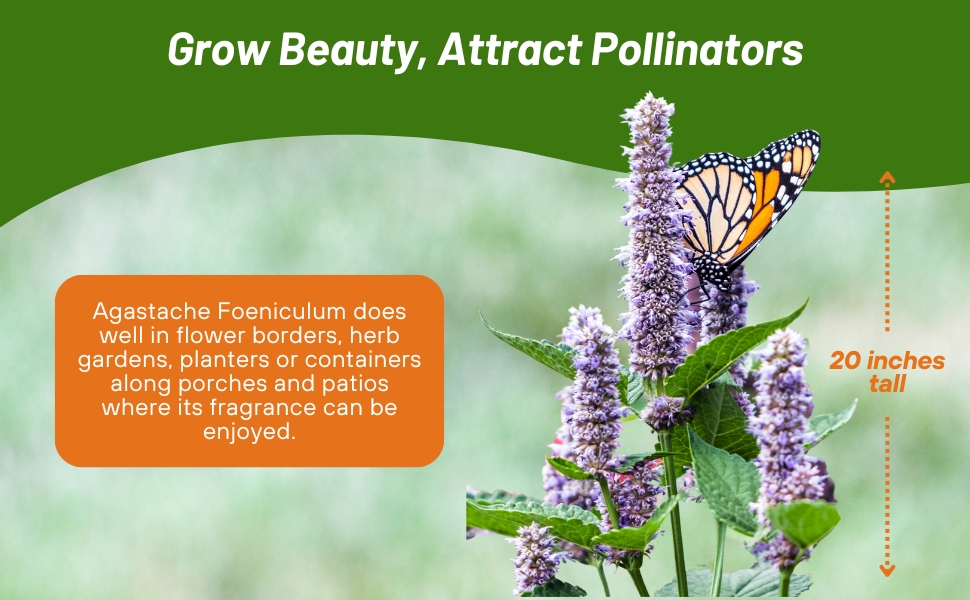
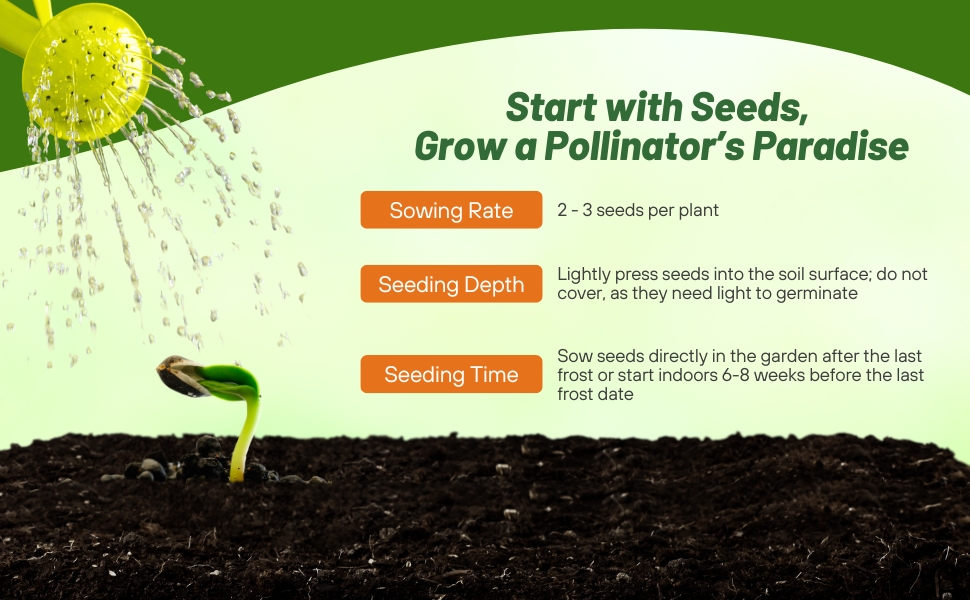
Anise Hyssop Golden Jubilee (Agastache Foeniculum) - This award winning Golden Hyssop herb has golden-green colored foliage with contrasting blue flowers. It can be grown from Anise Hyssop seeds, and it is attractive from seedling until frost. Once established, the plants are resistant to drought.
2003 AAS Flower Winner
This golden-leaved aromatic herb thrives in a full-sun garden or a partial shade garden location. The symmetrical, branching plants reach a mature height of 20 inches and spread 10 to 15 inches. The heat-loving plants will produce dense spikes of lavender-blue florets that crown the plants in mid to late summer. The attractive serrated leaves release an alluring mint fragrance when lightly crushed. Golden Jubilee is an easily grown, undemanding annual. Named Golden Jubilee to commemorate the 50 years’ reign of HM Queen Elizabeth II.
Common Questions
Do I need to deadhead my anise hyssop?
If you want to prolong your bloom season you will need to deadhead your flowers.
Does anise hyssop work for butterfly gardens?
Yes, anise hyssop attracts butterflies so is great for a butterfly garden.
Can I use anise hyssop for cut flowers?
Yes, anise hyssop can be used for a cut flower.
Can anise hyssop by dried for dried flower arrangements.
Yes, hang the blooming spikes upside down or let them dry naturally on the plant.
Planting Directions
TEMPERATURE
68F
AVERAGE GERM TIME
14 - 21 days
LIGHT REQUIRED
No
DEPTH
Seeds must be covered thinly
SOWING RATE
3 seeds per plant
MOISTURE
Keep seeds moist until germination
PLANT SPACING
24 inches
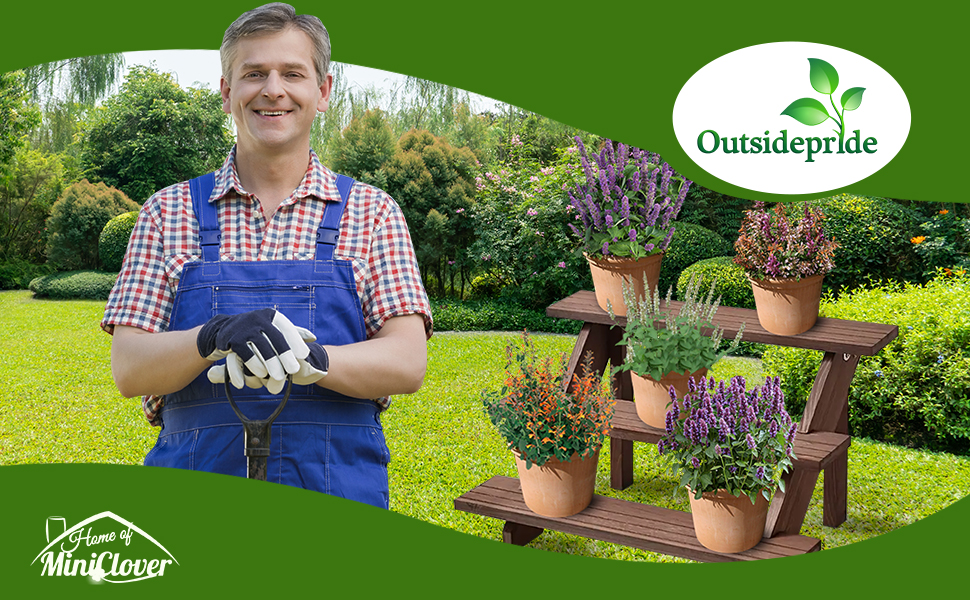
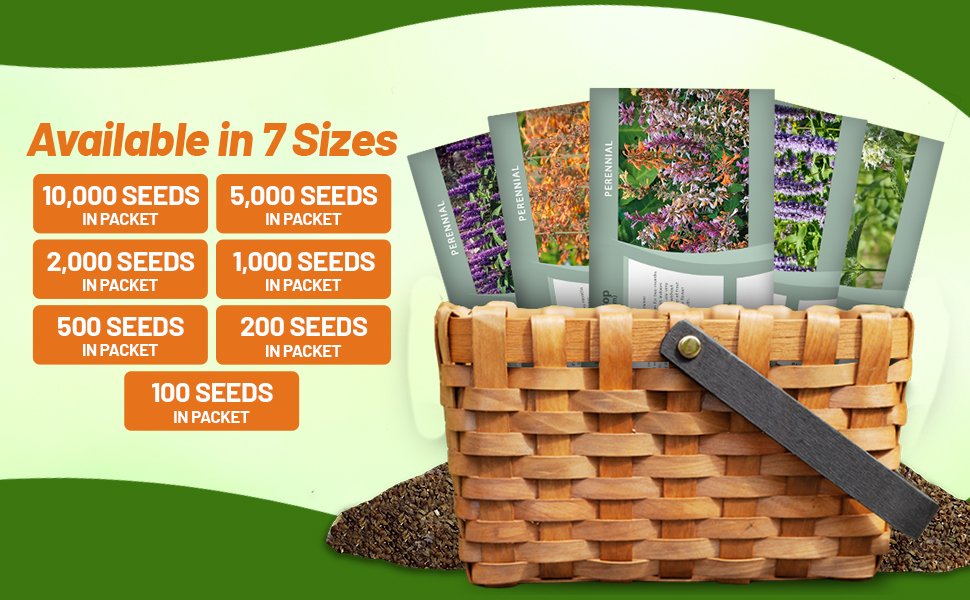
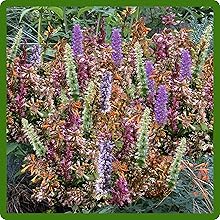
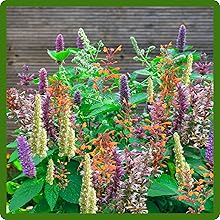
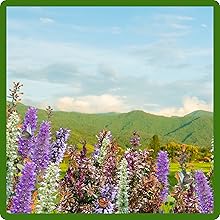
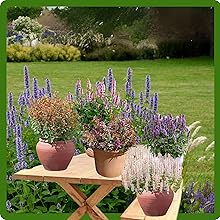
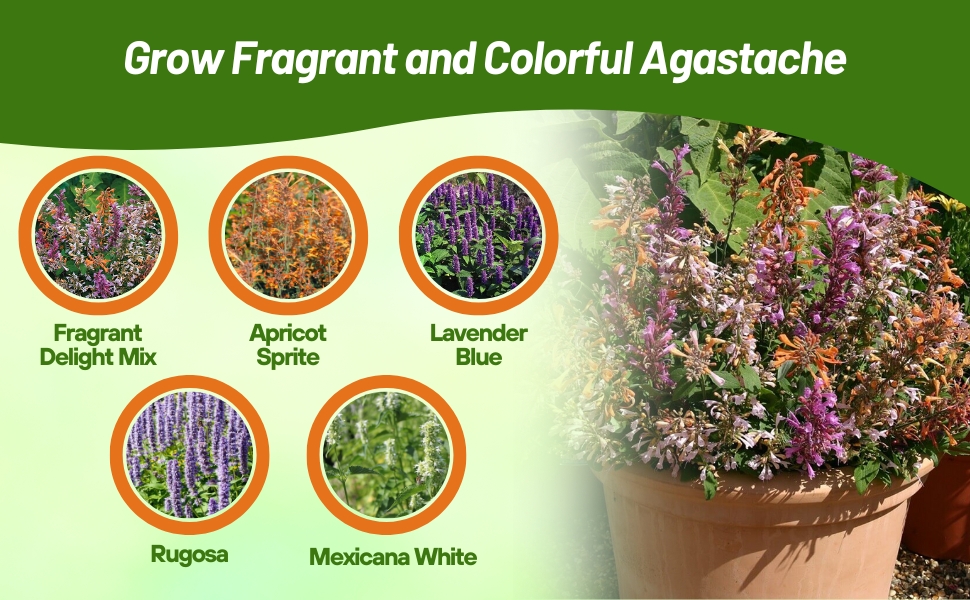
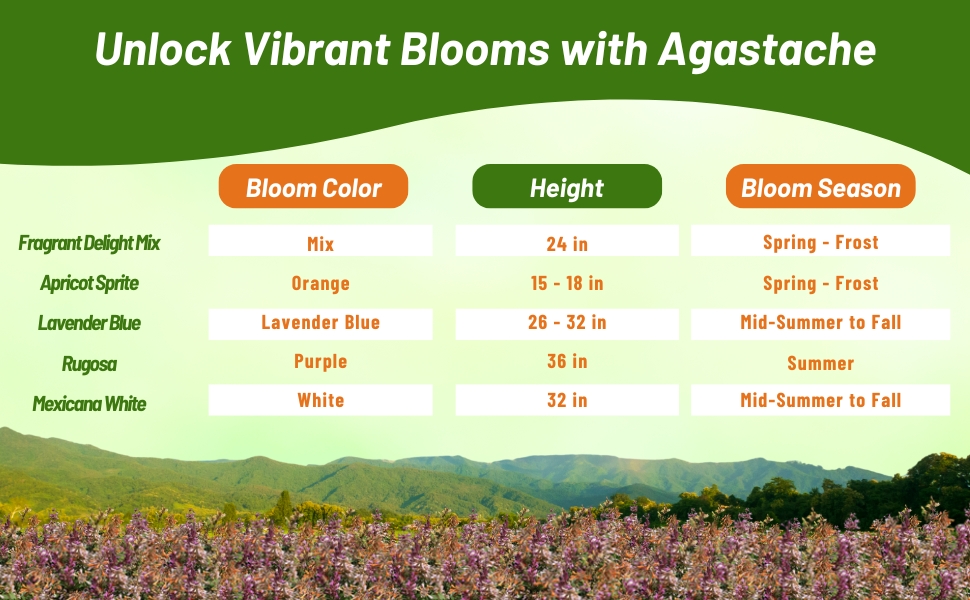
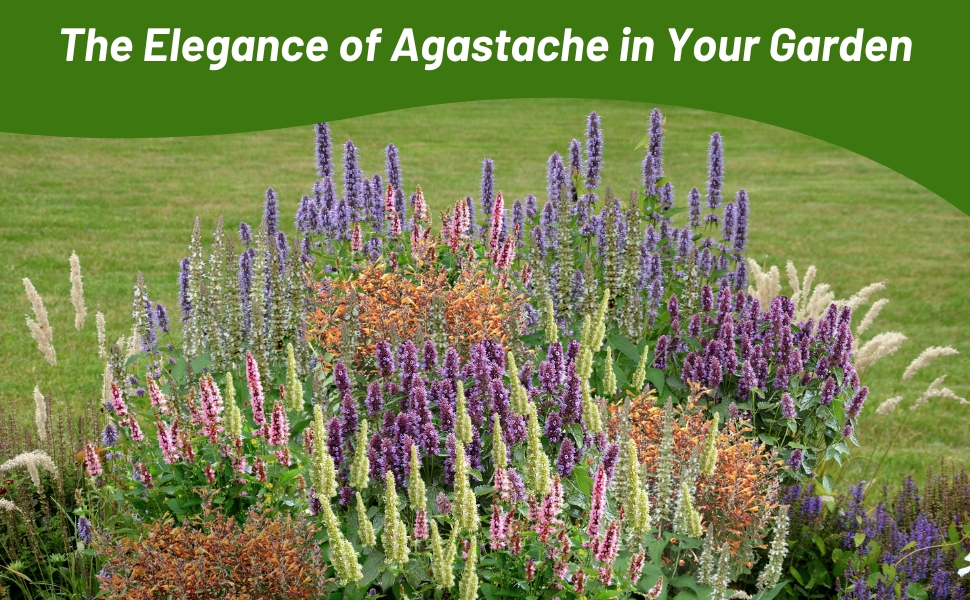
Mexican Hyssop (Agastache Aurantiaca Apricot Sprite) - This blazing hyssop rovides a sizzling blast of bright orange flowers during the heat mid-to-late summer. An outstanding perennial for attracting hummingbirds with brilliant fragrance. A great container plant; grow it as an annual if it is outside your growing zone. Grow in moderately fertile, well-draining soils and in full sun to partial shade.
Start the Agastache flower seeds indoors 6 - 8 weeks before the last expected frost. Cover the flower seeds lightly and keep them moist until germination. Transplant after danger of frost and the Hyssop plant will establish quickly in the garden. Aromatic foliage that resists grazing by deer and rabbits, this showy, water-wise perennial is perfect for rock gardens and open meadows. Loose spikes of fragrant, tubular apricot colored flowers on a dwarf form make it useful for mixed borders and containers. Needs very little water once established.
Common Questions
How can I encourage my Agastache to continue to bloom?
Trim the tips of the growth in spring when the plants reach around 6 inches tall to promote branching. Regularly remove spent flowers during the growing season to ensure continuous blooming.
Do I need to deadhead my Agastache?
Deadheading agastache flowers promotes more blooms and helps manage the plant's tendency to self-seed. While not essential, removing spent flowers maintains plant neatness and prevents excessive self-seeding by agastache.
For further pruning, consider whether you are cultivating agastache as a perennial or annual plant. For perennials, trim back about one-third of the plant in spring to stimulate fresh growth. Continue pinching and deadheading until midsummer, as new growth is sensitive to cold and could jeopardize the plant's survival in winter. If growing agastache as an annual, ongoing pinching and deadheading throughout the season is suitable.
Are agastache invasive?
If you have planted hummingbird mint, or any other type of agastache, in your garden, you may notice that it spreads similar to mint. This plant tends to self-seed abundantly, but removing the seedlings is a simple task. Additionally, you can prevent seeds from dropping by removing the spent flowerheads. Despite its tendency to spread, agastache is not classified as invasive, especially if you choose a variety native to your region.
Is it easy to grow agastache from seed?
Agastache can be grown from seed quite easily, but the seeds need cold stratification and light for germination. For this reason, it is recommended to start agastache seeds in the fall or winter with minimal covering.
Planting Directions
TEMPERATURE
68F
AVERAGE GERM TIME
14 - 21 days
LIGHT REQUIRED
No
DEPTH
Seeds must be covered thinly
SOWING RATE
3 seeds per plant
MOISTURE
Keep seeds moist until germination
PLANT SPACING
24 inches
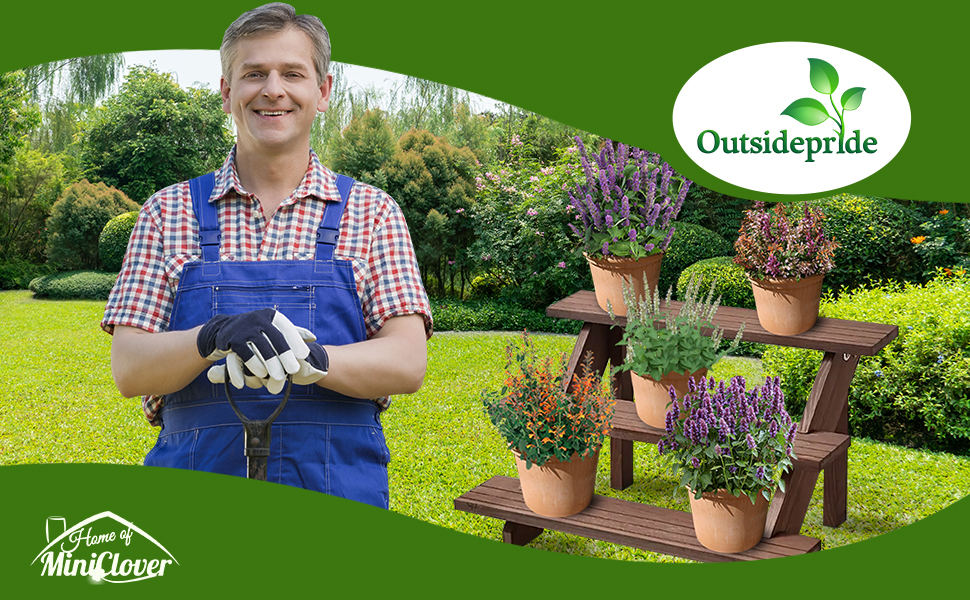
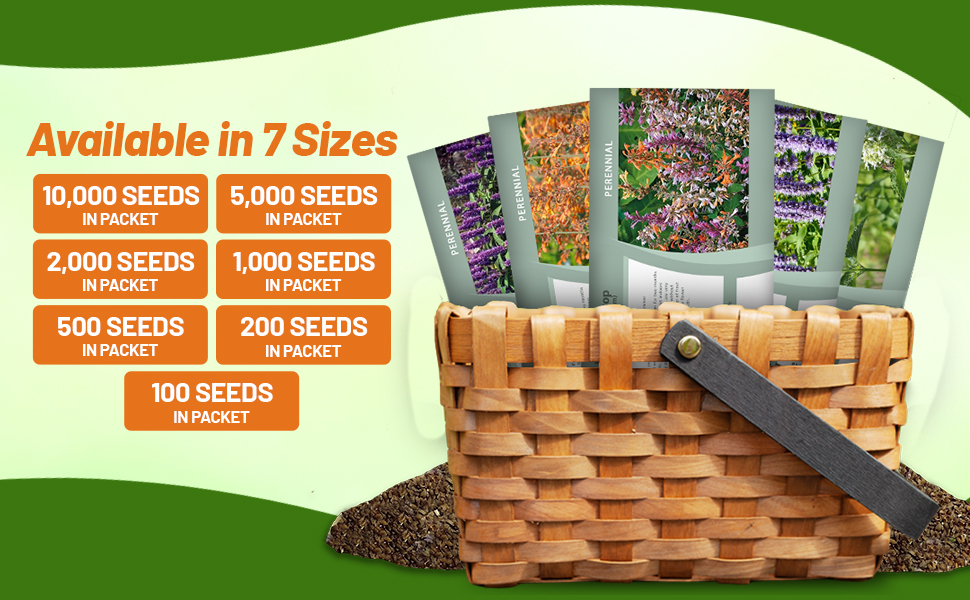
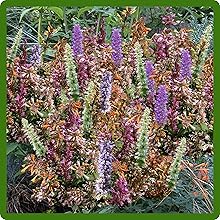
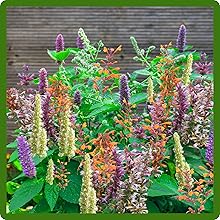
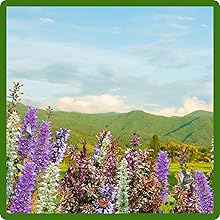
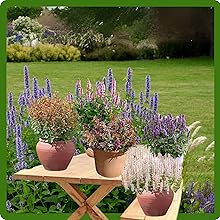
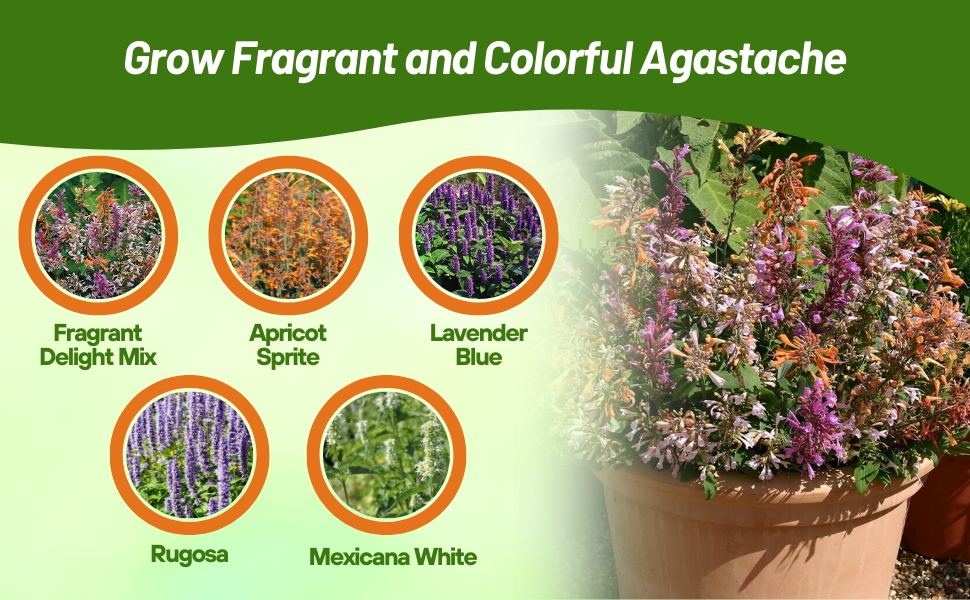
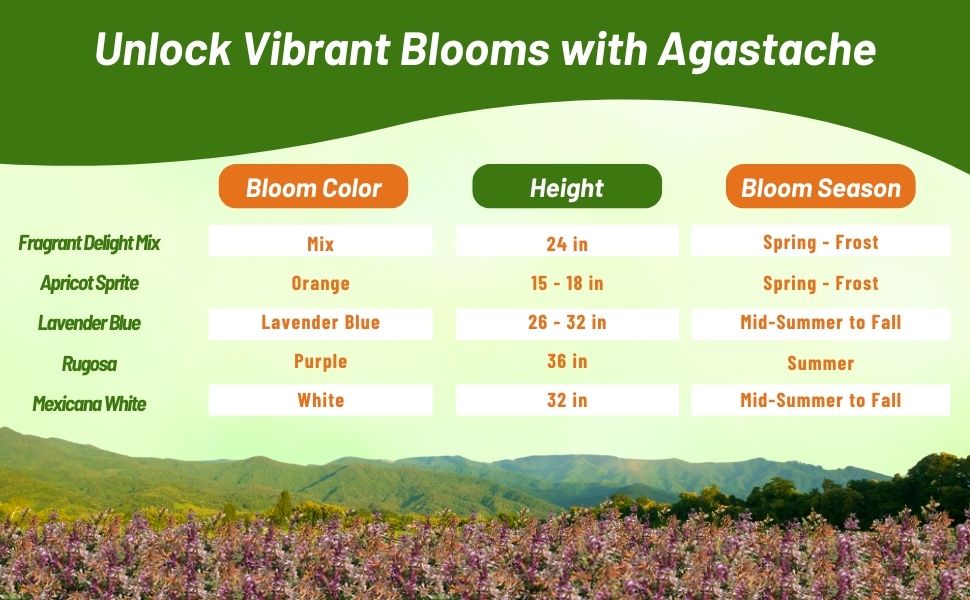
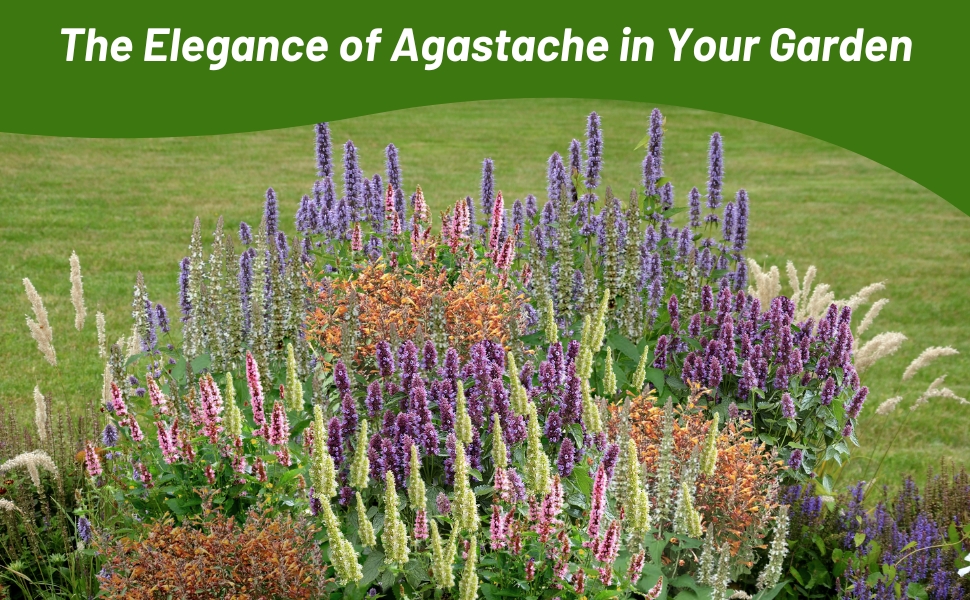
Mexican Hyssop (Agastache Aurantiaca Fragrant Delight Mix) - Perennial zones 7 - 10, typically grown as an annual in colder climates. Deliciously fragrant flower spikes in apricot, grape and raspberry colors! Prepare for the buzz of a diversity of beneficial insects and hummingbirds! These 24 inch tall plants are a welcome addition to the pollinator garden. Grow in moderately fertile, well-draining soils and in full sun to partial shade.
Start the Agastache flower seeds indoors 6 - 8 weeks before the last expected frost. Cover the flower seeds lightly and keep them moist until germination. Transplant after danger of frost and the Hyssop plant will establish quickly in the garden. Aromatic foliage that resists grazing by deer and rabbits, this showy, water-wise perennial is perfect for rock gardens and open meadows. Loose spikes of fragrant, tubular apricot, grape, and raspberry colored flowers on a dwarf form make it useful for mixed borders and containers. Needs very little water once established.
Common Questions
How can I encourage my Agastache to continue to bloom?
Trim the tips of the growth in spring when the plants reach around 6 inches tall to promote branching. Regularly remove spent flowers during the growing season to ensure continuous blooming.
Do I need to deadhead my Agastache?
Deadheading agastache flowers promotes more blooms and helps manage the plant's tendency to self-seed. While not essential, removing spent flowers maintains plant neatness and prevents excessive self-seeding by agastache.
For further pruning, consider whether you are cultivating agastache as a perennial or annual plant. For perennials, trim back about one-third of the plant in spring to stimulate fresh growth. Continue pinching and deadheading until midsummer, as new growth is sensitive to cold and could jeopardize the plant's survival in winter. If growing agastache as an annual, ongoing pinching and deadheading throughout the season is suitable.
Are agastache invasive?
If you have planted hummingbird mint, or any other type of agastache, in your garden, you may notice that it spreads similar to mint. This plant tends to self-seed abundantly, but removing the seedlings is a simple task. Additionally, you can prevent seeds from dropping by removing the spent flowerheads. Despite its tendency to spread, agastache is not classified as invasive, especially if you choose a variety native to your region.
Is it easy to grow agastache from seed?
Agastache can be grown from seed quite easily, but the seeds need cold stratification and light for germination. For this reason, it is recommended to start agastache seeds in the fall or winter with minimal covering.
















